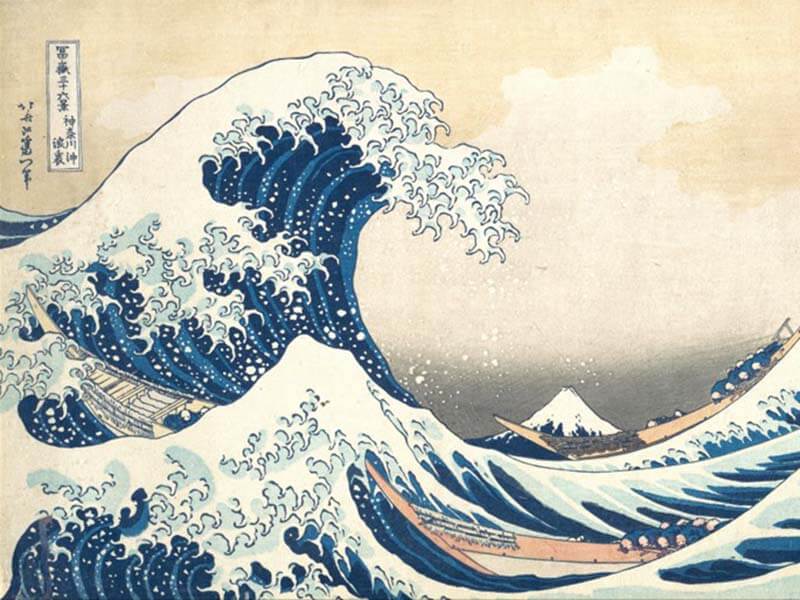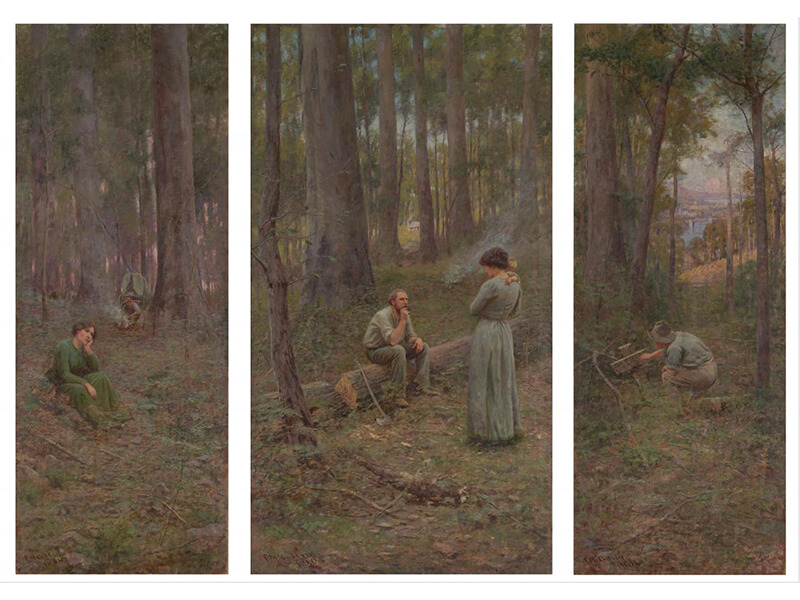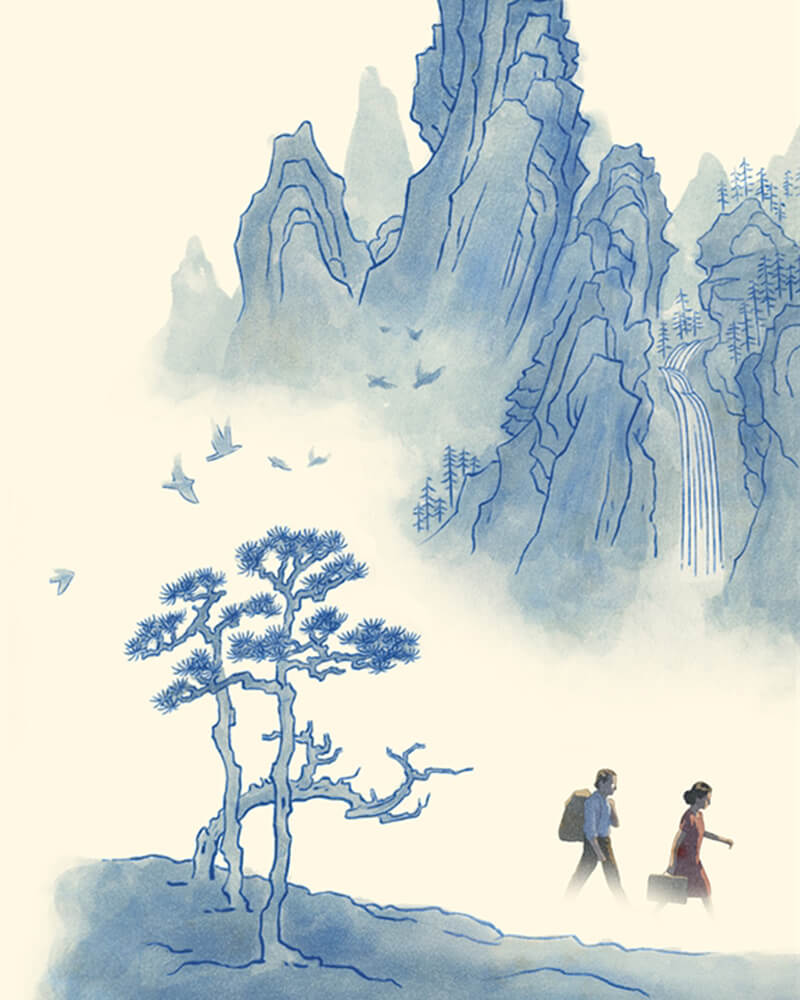
Teacher’s notes by Amanda Robinson.

Outline / Overview:
It goes without saying that all children believe their parents to be strange. Mine were unusual for a different reason…
One boy’s parents travel from far-off lands to improve their son’s life. But what happens next is unexpected. What does it mean when your parents are different? What shape does love take? And what happens when your parents sacrifice a part of themselves for you?
In this heartbreaking and heart-warming story, CBCA award-winner Zeno Sworder reflects on his own migrant parents’ sacrifices to create a universal story about what it means to give to those you love. Drawing from the sacrifices his Chinese mother made to raise her young family in a small country town, Sworder’s drawings are full of beautiful detail and fairytale settings that explore his own journey from child to parent.
With humour and pathos, Sworder reflects on the strange nature of giving and receiving love and celebrates those parents who embrace a hard life for themselves in the hope of a better life from their children. Full of depth and generosity as well as insight and candour, Sworder brings this gorgeous fable to life.
About the Author / Illustrator:
Zeno Sworder is a writer and artist who lives in Melbourne with his young family. After studying Chinese literature and migration law at university, he ended up as a dish washer. Later, he went on to work as a journalist, an English language teacher, a consular officer, an advocate for refugees and immigrants and a jewellery designer. He is a lover of all stationery but has a particular soft spot for pencils.
Sworder is the CBCA New Illustrator of the Year 2021, and his first book This Small Blue Dot was a CBCA Notable Book, the winner of the 2021 Australian Book Designers Association’s Award for Best Designed Children’s Illustrated Book, and the Designers’ Choice Children’s/Young Adult Book of the Year.
Themes to explore:
- Love
- Migration
- Multiculturalism
- Loneliness
- Acceptance
- Coming of age
Links to curriculum:
English, Art/Design, critical and creative thinking.
Application in the classroom:
Introductory activity:
Before beginning the book, have the students draw a picture of their immediate family/caregivers and include themselves in the picture.
Ask the students to share their drawing and explain who they have drawn with the aim of demonstrating both the similarities and the differences between each students’ drawings.
Share the following definition with the students:
Immigrant: a person who comes to live permanently in a foreign country.
Interaction during reading:
Two initial readings are suggested for this book.
On the first reading, allow the students to observe what they noticed.
Facilitate a discussion about what the students observed on the first read.
- What did they like about the story?
- What did they like about the characters?
- How did it make them feel?
On the second reading, direct students to some or all of these moments in the story:
- When the baker asks for 5 centimetres – what does he mean?
- The principal ‘kindly requested only 8 centimetres’.
- Ask the students to consider ‘how many centimetres’ uniforms, shoes and books might cost.
- What is happening when the parents are selling fruit?
- What does the boy think when the other children begin calling him names? Is he being fair to his parents?
- What does the boy’s mother mean when she says: ’Our hearts are just as big/Our love is just as good.’
- What happens when the boy has his own family? What happens to his parents?
Text response:
- The boy’s parents give their height so the boy can have things. What do your parents give you? How do they make you grow?
- What are some of the good things about the boy’s parents shrinking?
- Why does the boy want his parents to stop shrinking?
- What did the boy’s parents teach him about being different?
- The boy’s mother sings him a song, which he sings back to her at the end. The words say ‘Though our lives may be humble/ We are giants within.’ What does ‘humble’ mean? Even though the parents shrink, they are still giants – how?
Creative response:
Have the students select one of the parents in the story – it could be the boy’s mother or his father. Select one of the following moments from the story and write a journal entry from the point of view of your chosen parent:
- When the parents arrive from in Australia.
- When the baker asks for 5 centimetres
- When the boy has his own family and his parents don’t have to give any more.
Text comparison:
Watch the following reading of The Giving Tree by Shel Silverstein.
Facilitate a discussion using the following questions:
- What does the tree give the boy in The Giving Tree? What do the boys parents give in My Strange Shrinking Parents?
- The Giving tree gives everything she has to the boy until she is just a stump. Is she still happy? Why/Why not? Do you think this is fair? Why/why not?
- What happens at the end of My Strange Shrinking Parents?
Art/Design exercise
Consider how the pictures tell a story in My Strange Shrinking Parents.
Exercise One:
Have the students respond to the following famous paintings/illustrations. It could be as simple as describing what is being depicted or they could create a story based on the image.



Exercise Two:
Each image has its own style. What does each style tell us about the person who painted it?
Have the students create their own painting or drawing which represents their style or emulates the style depicted in the images provided. Maybe they use lots of colour, maybe they use just one. Perhaps they use a cartoons style or a more realistic style.
Exercise Three:
Notice the tea pots at the start and the beginning and throughout the story. Each tea pot is very different, but they all do the same thing.
Ask the students to consider what kind of tea pot they might be. Have the draw themselves as a tea pot.
Posted on September 8, 2022